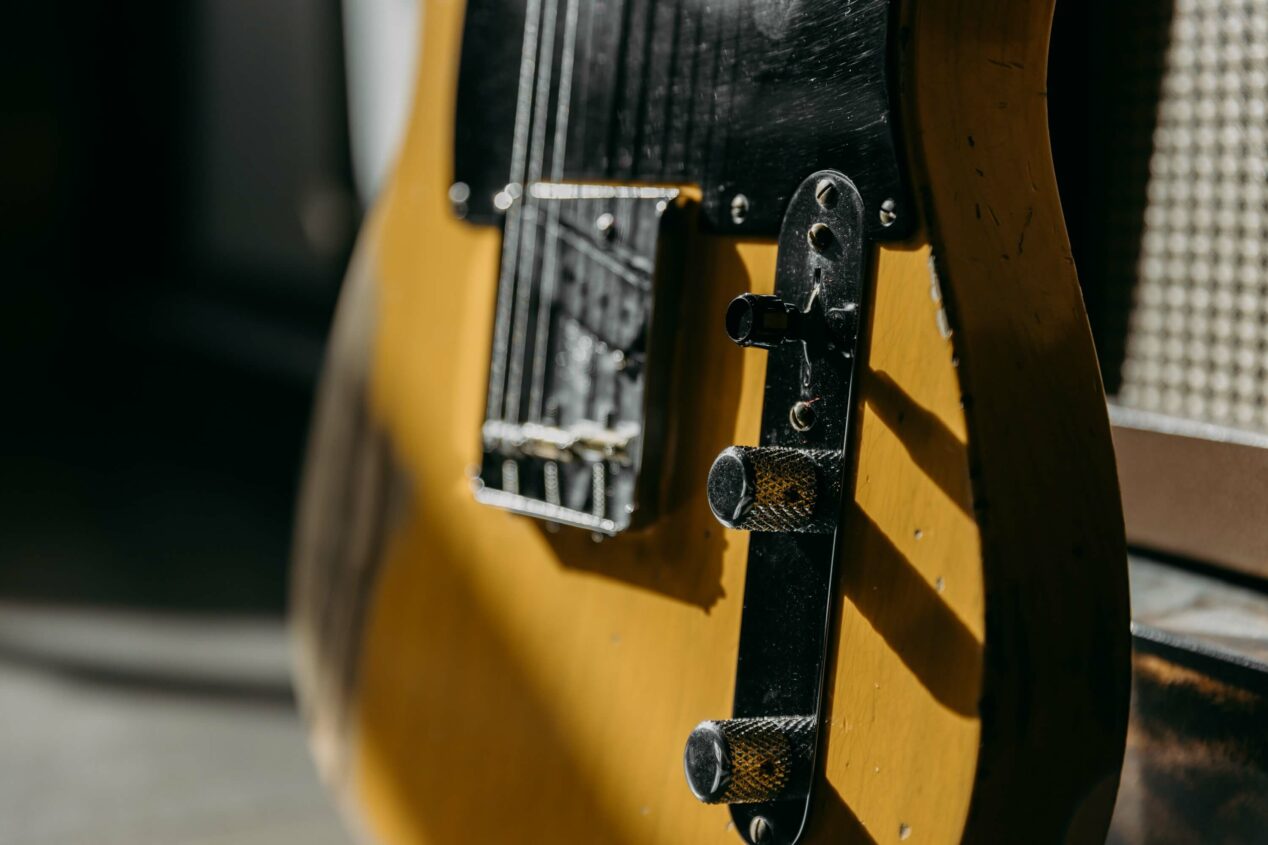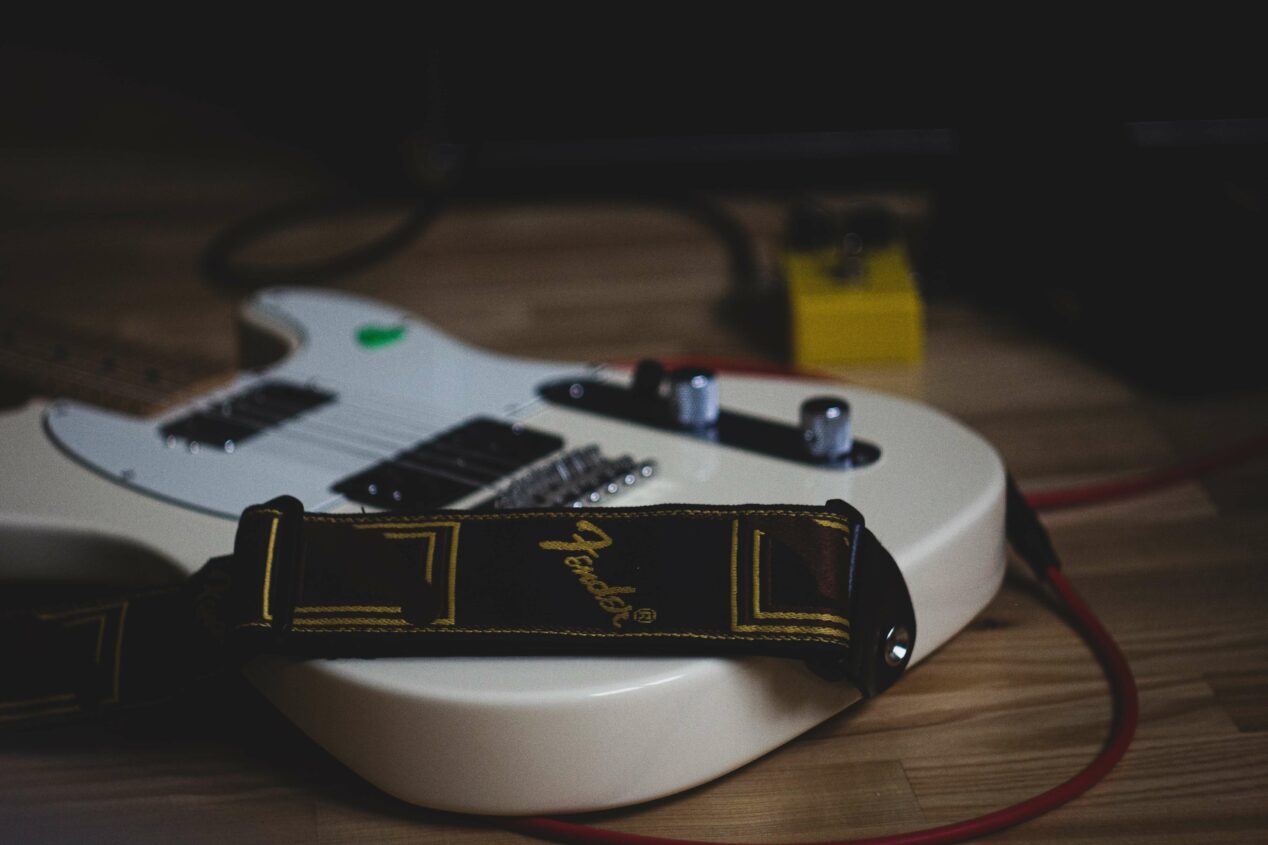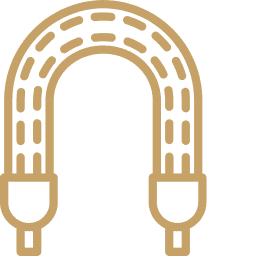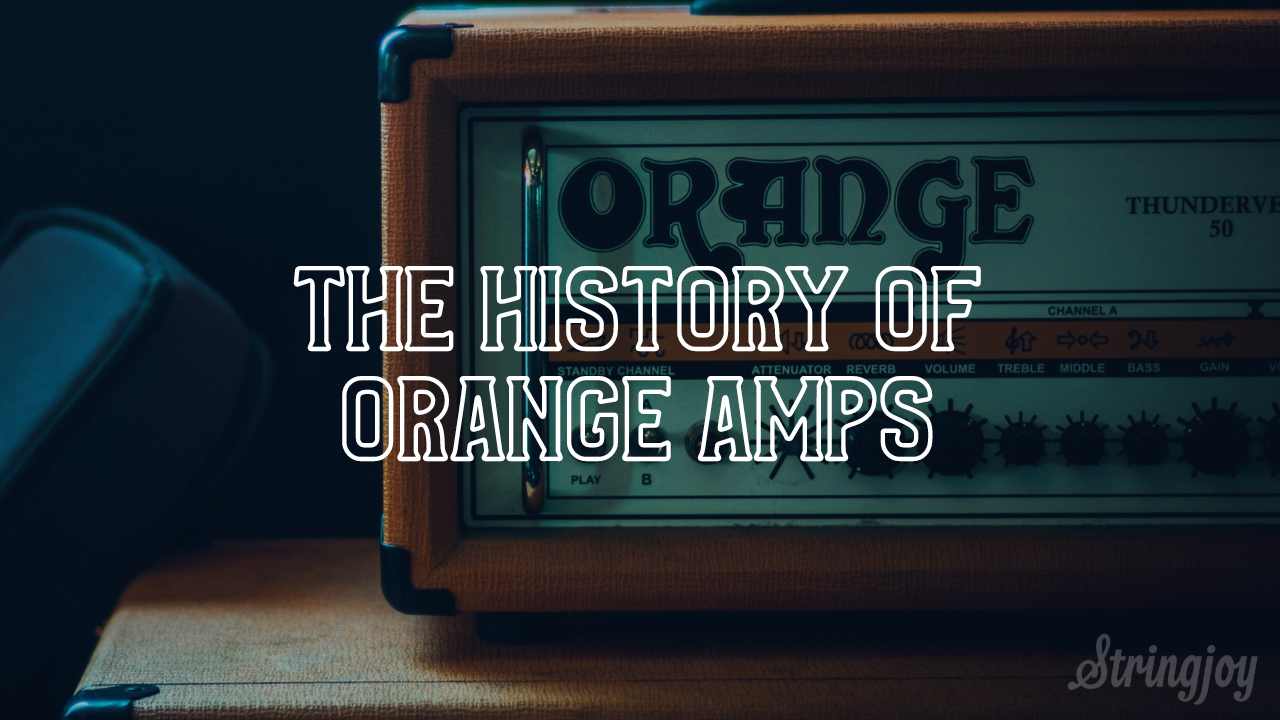The electric guitar as we know it would not be the same without the Telecaster. The Telecaster was the first mass-produced solid-body electric guitar, and it forever changed the world of guitar with its simple looks, reliability, and great tones. From country and blues to rock and punk, the Telecaster has been a staple of nearly every music genre for decades.
In this article, we’re going to take a closer look at the history of the Telecaster. From its first inceptions to the experimental Telecasters of today, we’ll look at every part of the Telecaster’s history. So put on your favorite Tele record, and get ready to learn all about the history of the Telecaster.
Before the Telecaster
To truly tell the story of the Telecaster, you have to start before the Telecaster existed. Prior to World War II, amplified guitars weren’t really a thing. The Rickenbacker Frying Pan was introduced in the 30s, there wasn’t much need or demand for it. Big band music dominated in the 40s, and players used archtops with minimal amplification.
After the war though, the musical landscape started to shift. Big band waned, with rhythm and blues, country, boogie-woogie, and honky-tonk becoming more popular. These players embraced amplification, as it helped their smaller bands sound bigger and more powerful. At the time, they were using archtops with pick-ups, but there were problems with this.
As the bands and their music got more popular, venues got bigger. And since this is prior to the advent of modern PA systems, guitarists needed a way to make themselves even louder. Archtops could also be fragile, a big disadvantage for touring bands. On top of that, they could be expensive, making it harder for people to get in on the fun.
They also wanted guitars that played faster. Archtops are great, but they could be unwieldy. These guitarists wanted thinner necks and smaller bodies that allowed them to play faster, easier. But none of the guitars of the time could deliver on that need.
There were a few guitars that indicated what the future might look like for guitar, like Les Paul’s “the Log” and Merle Travis’ Bigsby, but those weren’t affordable or mass-produced. Players had no way of getting the guitars they were looking for.

Leo Fender’s Idea
As with many innovators in the guitar world, Leo Fender saw what was going on and realized he could help players finally get what they wanted. He knew guitarists need guitars that wouldn’t feedback like archtops, had a powerful and cutting tone, good ergonomics, a reasonable price, and availability.
Fender had a specific tone in mind too. He imagined a clear and chiming tone that would cut through the mix in concert halls, without the midrange that he thought muddled mixes. With all that in mind, he started working on what would eventually become the Esquire in 1949.
The First Fender: The Esquire
At the time, the Radio & Television Equipment Company (Radio-Tel) was Fender’s distributor. They were managed by Don Randall, who gave Fender’s first proper guitar its name—the Fender Esquire. Fender liked the name as well, feeling that it “sounded regal and implied a certain distinction above other guitars.”
By the spring of 1950, Radio-Tel began promoting the Esquire. It was a six-string, solid-body, electric guitar with an anticipated price of $139.50. It only featured one single coil pick-up in the bridge position, and it had a bolt-on neck that was advertised as making repairs easier.
Their main marketing plan was to sell the guitar to music instructional centers, getting affordable and practical guitars into the hands of players. This would make the guitars well known, as well as create more demand for a future two pick-up version (which Fender anticipated; Esquires were actually routed for two pick-ups and had a three-way switch, giving players the ability to easily add a pick-up later on).
There was one huge issue with these early guitars though—the lack of a truss rod. Fender’s belief was that their necks would be strong enough to resist warping. And if they did, he could simply mail them a new one that could be easily bolted on.
However, that simply wasn’t the case. The guitars Randall took to trade shows in 1950 had warped necks, and he requested new versions with reinforced necks. Fender was reluctant, claiming that the time and effort required to implement reinforced necks wasn’t worth it.
He eventually changed his mind though. A test guitar in his lab got a warped neck, and Fender realized that he had no choice but to reinforce the necks. With the Esquire design completed and the guitar doing well, Fender and company were ready to introduce the two pick-up model.
The Brief Broadcaster
Production on the Broadcaster began in late 1950, going on sale in January of 1951. The double pick-up, solid-body, electric guitar that everyone wanted and needed was finally on the market. It was advertised as having a “modern cut-away body,” “modern styled head,” and an “adjustable solo-lead pickup completely adjustable for tone-balance by means of three elevating screws.”
However, the Broadcaster was dead by February of 1951, just a month after its initial introduction. So what happened? Some things never change, and businesses being protective over trademarks is one of them. Gretsch claimed that the Broadcaster infringed on their trademark for their Broadkaster.
Randall and Fender realized they needed to change the name, so they asked salespeople for ideas and brainstormed their own. On February 24, 1951, the Broadcaster was renamed the Telecaster, finally settling on the now iconic name.
This change caused some problems at first. It costs a lot of money to make changes, and removing the Broadcaster logo from headstocks was tedious. However, we all know that it worked out in the end.
It’s worth mentioning that this also created a number of now incredibly desirable guitars, often referred to as No-Casters. For several months, Telecasters were sold with just Fender on the headstock, lacking the Telecaster name. These guitars are now a favorite amongst collectors.
Time for the Telecaster
By mid-1951, the Telecaster finally emerged. The guitar hit the market for $189.50, and players started buying and using Telecasters. They had a brief stint of huge popularity and got used by some big names, but the Stratocaster took over when it was introduced in 1954.
Furthermore, even during the time post-Telecaster and pre-Stratocaster, many professionals were choosing other guitars instead. Jazz players rarely chose Fender, and many preferred the high-end offerings from companies like Gibson.
Still, it did well and gained an audience. The Telecaster became very popular in country music in particular. The Telecaster’s twangy bridge pick-up was a change from the warm and full sound of players like Chet Atkins and Hank Garland, but it worked great for country music.
Eventually, the Telecaster became a staple in the arsenal of studio guitarists. It provided a tone that you just couldn’t get out of other guitars, so they continued to sell well. And as rock became prominent in the 60s, players like Jimmy Page, Jeff Beck, and Steve Cropper put the Telecaster front and center. As the years went by, players continued using Telecasters, making them the iconic guitars they are today.
However, a big part of why the Telecaster became such an iconic guitar are the changes and variations from throughout the years. Telecasters continued adapting and changing, helping them maintain their relevance. So let’s take a look at the Tele’s specs and how they’ve changed.
The Nuts and Bolts
For this section, we’re going to focus on the original 1951 Telecaster. It will serve as a good reference point for all the future changes Fender made to the Tele.
The original tele had a scale length of 25.5”, a bolt-on maple neck with a “skunk stripe,” two single-coil pickups, a three-way switch, one volume and one tone control, and individually adjustable dual string saddles.
Focusing on the electronics, the wiring was a bit unique. One might assume that a three-way switch means you get bridge, neck, and both (middle) options. However, that was not the case on early Telecasters.
Position one was the bridge pickup, and the tone control would blend in the neck pickup (in this position only). Position two was the neck pickup. And position three was a darker version of the neck pickup. This seems incredibly odd by modern standards, but it’s what was used at the time.
Interestingly enough, it resulted in its own unique sounds. Players figured out that you could use both pickups by carefully balancing the switch between positions. This resulted in a snarly tone that was similar to the Strat’s in-between sounds.

The Telecaster Over the Years
Now, let’s take a look at how Telecasters have evolved over the years. The Telecasters of today have changed a bit, with numerous models that share almost nothing with the original Telecasters of the 50s.
In 1952, the tone blend circuit was replaced with a standard tone control. In 1953, the bridge was modified slightly to provide better adjustment for the B and E strings. There were numerous other small changes made during this time as well, like staggered pole pieces and a further modified bridge.
In 1959, Fender introduced the Telecaster and Esquire Custom. These guitars had white binding and Jazzmaster-like rosewood fingerboards, making them the high-end versions of the affordable classic.
The Telecaster Thinline came out in 1968, which was a semi-hollow instead of a solid-body guitar. This guitar would go on to become iconic in its own right, particularly after the changes made in 1972.
1972 was a big year for the Telecaster. The Thinline Telecaster was modified to include a wide-range humbucker in the neck in lieu of the standard single-coil. The Telecaster Custom introduced in 1968 was also modified, getting two wide-range humbuckers. The Telecaster Deluxe was also introduced, again featuring two wide-range humbuckers. However, it also had a Strat-style headstock and Gibson-style volume/tone controls with two controls for each pickup.
All of these Telecaster variants have become icons on their own. These guitars were used by big names such as Keith Richards, and they are still seen constantly today.
There are a few other Telecaster variants as well, such as the Cabronita. The Cabronita is a semi-hollow Telecaster with a set of classic TV Jones humbuckers. There’s also the Sub-Sonic Telecaster, which has a 27” inch scale length.
The Telecaster Lives On
It’s hard to imagine guitar without the Telecaster. Since the original Esquire was introduced in 1950, it and the Telecasters it spawned have been a staple in the music world. Whether it’s blues, rock, or country, there’s a good chance your favorite artist has used a Telecaster at some point.
Though the Telecaster has changed a lot over the years and there have been multiple other models, the classic Telecaster remains an ever-present icon in music. So go to your local shop, find a Telecaster you like, put on some strings, and find out why the Telecaster is still around after all these years.








5 Responses
I Really Enjoy All Your Well Written Articles. Wonderful Information.
Regardless Of Tge Guitar I’m Playing; I String It With Stringjoy..!!..
I love the look and feel of the Thincaster. So I’m building one. I will be putting Stringjoy strings on it. I’m putting gold foil pickups on it.
Thanks for your continued support for guitarists through the informative articles. History and technical focus on the guitar helps build appreciation for how the instrument has developed.
Hello,
I enjoyed your article on the history of the Telecaster, as I own a ’97 Custom Shop Tele.
My homeowners insurance paid off, when my house was broken into and (among other stuff) my ’68 went missing.
When one calls the cops in such a situation, there is a report taken by the crime scene investigator, and one must describe each missing item. In describing the guitar, I said that it had a five-way switch. It was in bits, waiting on the surgeon to install the switch, when the window was broken.
So, I eventually figured out, when the Shop got the order, they did what any red-blooded Fender folks would do when asked why there’s a five-way switch on it.: They decided that it was because the Tele had three pickups.
Well, okay.
And it does. This thing is pretty, in person, and fun to play. It’s got three Texas Specials for that five-way switch so I can select all three by themselves or two between positions.
Translucent white over ash body, all gold hardware. Solid maple neck with a skunk stripe. White pickup covers.
It’s so pretty, in fact, that I gave it the title of “Miss November,” after its month of construction.
Interesting Ang enjoyable.